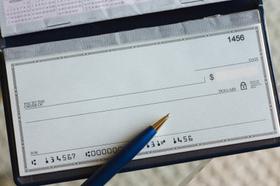Many parents find themselves facing financial challenges when it comes to paying for their child's private school education. It can be especially difficult when circumstances change unexpectedly, such as a job loss, medical expenses, or a decrease in income. However, withdrawing your child from private school or immediately resorting to public school may not be the only option. Let's explore some alternatives and steps you can take in different scenarios.
Scenario A: Uncertain Job Situation
If you're facing uncertainty due to a job loss or potential layoffs, it's understandable to feel concerned about continuing with private school. Before making any decisions, consider reaching out to the school and discussing your situation. Many private schools have financial aid programs in place to assist families during challenging times. By openly communicating your concerns, you may find that the school is willing to work with you to find a solution. They understand the importance of education and retaining students, so they may be able to offer some financial assistance or flexible payment options.
Scenario B: Unexpected Medical Expenses
When unexpected medical bills arise, and you find yourself in a financial bind, it can put additional strain on your ability to pay for private school tuition. In this situation, reaching out to the school and explaining your circumstances is crucial. They may be willing to reassess your financial aid package or offer additional support. Private schools are often compassionate and understand that unforeseen circumstances can affect a family's financial stability. By having an open conversation, you can explore options and work towards a solution that allows your child to continue their education.
Scenario C: Income Reduction
If you've experienced a reduction in income, whether due to a pay cut or other factors, it's important to address the situation promptly. Contact the school's financial aid office and explain the change in your financial circumstances. It may not be too late to request more financial aid. Many schools have a process in place for families to appeal their financial aid awards if their financial situation has changed significantly. By providing updated financial information, you allow the school to reevaluate your situation and potentially offer additional assistance.
Remember, private schools are aware of many families' current economic challenges. They want to support you and ensure that your child receives a quality education. The professionals at the school, including the financial aid office, are there to help. They understand that unexpected events can happen and are often willing to work with families to find a solution.
This video offers some suggestions for paying for a private school education.
Other considerations
To gain more insight and guidance, you can also explore available resources. The National Association of Independent Schools (NAIS) also offers an informative article titled "Financing an Independent School Education." These resources can provide you with further information and strategies for navigating financial challenges.
Remember, discussing your concerns and situation openly with the professionals at your child's school is essential. They have the knowledge and experience to guide you through these difficult times and help you explore all available options. By taking proactive steps and seeking assistance, you may find that you can continue providing your child with the private school education they deserve, even during challenging financial circumstances.
Using 529 Education Accounts and other Educational Savings Accounts
Using a 529 education account or other educational savings accounts can be a valuable strategy to help defray private school expenses. A 529 plan is a tax-advantaged savings plan specifically designed for educational expenses. These accounts allow parents to contribute money that can grow tax-free over time. When it comes time to pay for private school tuition, withdrawals from a 529 plan can be made without incurring federal income taxes or penalties.
One of the advantages of a 529 plan is its flexibility. While traditionally associated with college savings, many states now allow 529 funds to be used for private K-12 education expenses as well. This means that parents can start saving early and accumulate funds that can later be applied towards private school tuition and related costs. It's important to note that specific rules and guidelines may vary by state, so it's advisable to consult with a financial advisor or tax professional to understand the details and potential tax implications.
In addition to 529 plans, other educational savings accounts, such as Coverdell Education Savings Accounts (ESAs), can also be used to save for private school expenses. These accounts operate similarly to 529 plans, offering tax advantages for educational savings. However, ESAs have lower contribution limits compared to 529 plans, and their usage is not limited to college expenses alone. Parents should explore the features and benefits of different savings account options to determine which best aligns with their goals and financial situation.
By utilizing 529 plans or other educational savings accounts, parents can take advantage of tax benefits and long-term savings growth to help mitigate private school education costs. Starting early and consistently contributing to these accounts can help build a financial cushion and provide greater financial flexibility when it's time to pay for private school tuition. Consulting with a financial advisor or tax professional can provide personalized guidance and ensure that you make the most informed decisions for your specific circumstances.
Financial aid programs are generous but finite.
Many private K-12 schools are known for their generous financial aid programs, which aim to make their education accessible to a wide range of families. These schools understand that not everyone can afford full tuition, and they allocate a portion of their funds to create a financial aid pool specifically for this purpose. The funds for financial aid usually come from a combination of sources, including endowments, donations from alumni and supporters, and the school's operating budget.
It's important for parents to be aware that the financial aid pool is finite. The availability of funds is limited, and as more families request financial aid, the pool may become depleted. That's why it's crucial not to delay asking for more aid when the need arises. If your financial situation changes or unexpected circumstances arise, such as job loss or medical expenses, contact the school's financial aid office promptly. By expressing your updated financial situation and explaining your challenges, you allow the school to reassess your aid package and potentially offer additional support.
In addition to traditional financial aid, there are other options that parents can explore. Scholarships are often available for students with specific talents, achievements, or backgrounds. Grants may also be offered by external organizations or foundations that support education. Work-study programs allow students to work on campus to help offset some of the costs. Some schools may offer tuition payment plans that allow for monthly installments; in certain cases, loans might also be available. Researching and discussing these options with the school's financial aid office is essential to determine the best approach for your specific circumstances.
Remember, private schools are committed to supporting families and making their education accessible. By being proactive and seeking financial aid when needed, parents can take advantage of the available resources and ensure that their child can continue receiving a quality private school education.
Questions? Contact us on Facebook. @privateschoolreview
#PrivateSchoolEducation #FinancialAidOptions #EducationSupport






-4c3194pi4wis8gsg004w0g44w-280.jpg)















